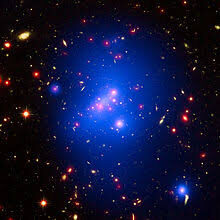Illuminating the dark side of cosmic star formation at z > 3
Margherita Talia (DIFA Univ. di Bologna)
Tuesday 05/11/2019 @ 14:00, Sala IV piano Battiferro
One of the key open questions in galaxy evolution is how efficiently galaxies form stars as a function of cosmic time. In order to solve this problem, it is crucial to reconstruct the star formation rate density (SFRD) to the highest possible redshifts. However, the available information at z>3 is limited and biased towards UV-luminous galaxies. One approach is to search for star-forming galaxies (SFGs) at z>3 missed by optical/NIR surveys because of dust obscuration. In this project we have used radio data from the VLA-COSMOS survey (Smolcic et al., 2017a) to search for such galaxies. We selected a subsample of 286 galaxies without optical/NIR counterpart in COSMOS2015 photometric catalogue (Laigle et al., 2016). We reconstructed the median Spectral Energy Distribution (SED) of this sample performing a stack in each band from the optical to 24um and combining the results with FIR data (Herschel+SCUBA from Jin et al., 2018). The median SED shows no detection in optical bands, while significant emission emerges from NIR to sub-mm. Moreover the SED fitting allow us to provide an estimate of a photometric redshift of ~2.9 and to derive an infrared luminosity (LIR) of 10^12.4 L/Lsun, consistent with ULIRG’s range luminosity. For a subsample of 169 galaxies it was possible to recover a few detections from NIR-to-FIR and to estimate their photometric redshifts and SFRs. I will show the contribution of these dusty SFGs to the cosmic star formation history. Our results suggest the existence of a significant population of obscured high redshift galaxies completely missed in the available NIR surveys, and that our approach based on radio selection is very efficient to find them.

